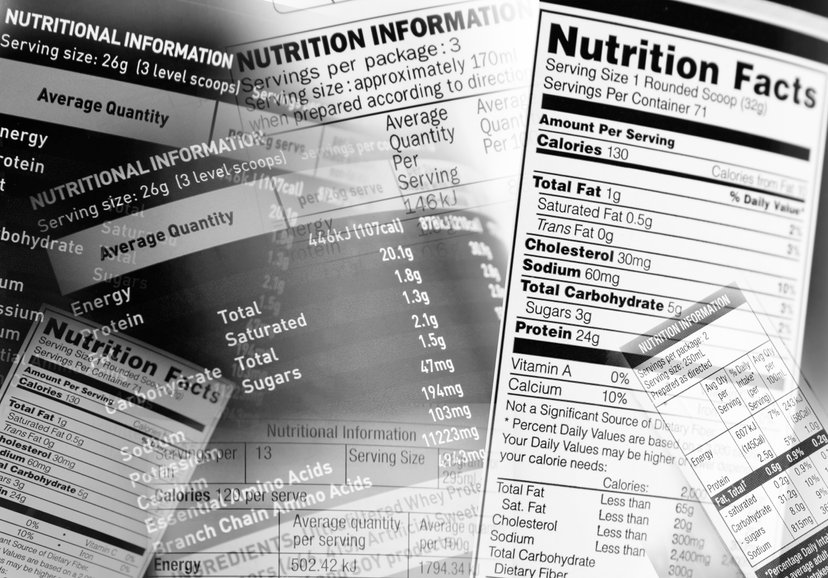Wondering how to read nutrition labels?
Have you ever picked up a product at the grocery store and wondered if it was “healthy” or not? Most health-conscious people have. Many others have not. Most of us are a bit confused about how to read nutrition labels properly.
Krista Stevens offers her suggestions on how to properly dissect a nutrition label to help you make the best possible choices.
When you look at a nutrition label, it is packed with terminology and percentages, and how they affect your health.
After reading this article, you will be able to confidently pick up any item at the store and determine if it is a healthy option.
How to Read Nutrition Labels
Step 1: Don’t fall for branding
Companies have done a great job making certain foods look healthy by using specific colors, designs, logos or wordage on their packaging.
It is important to remember that words like “natural” are loosely regulated by the FDA, so this should have little effect on your final decision.
Step 2: Pay close attention to serving size
This one is tricky because not all packages contain one serving. For example, a family size bag of chips may contain six or more servings inside a single bag. With this in mind, if you eat more than one serving you will need to take that into account and multiply your calories/nutrients accordingly.
Step 3: Look at the calories and nutrients
There are six classes of nutrients. These include fats, carbohydrates, proteins, vitamins, minerals and water. All of these nutrients are classified as essential, and your body needs them to function properly. These nutrients need to be consumed because your body cannot produce them on their own.
The best practices are to keep the “bad stuff” to be in the (0-5%) range. Conversely, you want the “good stuff” to be higher percentages. A product can be labeled as an excellent source of a nutrient if it ranges from 20% or higher.
To keep things simple, you should aim to consume products that have high percentages of the “good stuff” and low percentages of the “bad stuff.”
It is important to know what nutrients are considered beneficial and what nutrients we should avoid, this way you can understand what should be high or low in percentages.
The first nutrient I would like to cover are fats. There are “good fats” and “bad fats.”
The “good fats” include Mono-unsaturated and Polyunsaturated fats. The “bad fats” include Saturated and Trans fats. This means that you want to keep the Mono-unsaturated/Polyunsaturated fats as high as possible (in the 20% or higher range), and the Trans/Saturated fats in the (0-5% range).
As you continue down the label, you will notice that the next nutrient listed is Cholesterol. Cholesterol is also a fat. There are two types of cholesterol. These include high-density lipoprotein (HDL) and low-density lipoprotein (LDL). The good cholesterol is HDL and the bad cholesterol is the LDL.
Step 4: Our old friend, carbs
Carbohydrates are sugars, and sugars are what helps produce energy for our bodies. You still want to make sure you are not consuming too many carbohydrates, but you only want to eliminate these from your diet if you have a health issue.
Step 5: You need protein
Protein is essential for your body because every human cell contains it. You need this in your diet so your body can build and repair new cells. As you can see in the label provided, they do not give us a specific percentage of protein, but it only has three grams, so we can infer that this is a low source of protein. Protein also helps regulate your appetite and makes you feel full for longer periods of time.
Step 6: What vitamins and minerals does it have?
The label shows all of the vitamins and minerals listed in the product. The higher the percentages in this section, the more nutritious the product is. If a product has low percentages of vitamins, we can infer that this is not the most nutritious product.
Overall, it is important to really read about the products you are consuming.
Once you understand the process of reading a nutrition label, you will be able to compare products and make healthier life choices.
Remember, you want the “bad stuff” to be in the lower percentages (0-5%), and the “good stuff” in higher percentages (20% or higher).
Additionally, just because something is not nutritious, does not mean it is necessarily “bad” for you.
I personally always follow the rule to eat “bad things” in moderation and try to eat a well-rounded diet!
Click here to read more about how to read nutrition labels.






